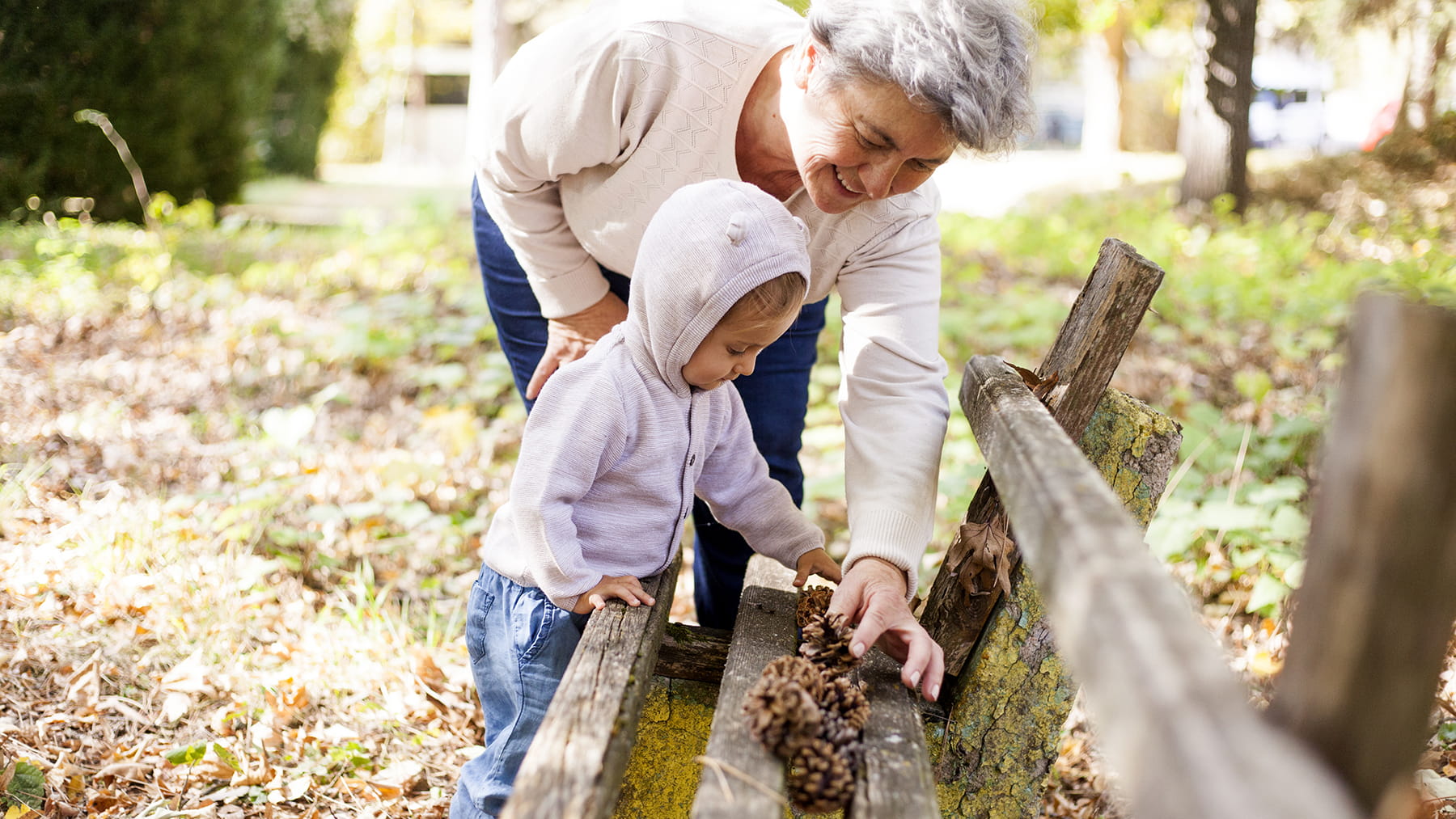Grandparents as babysitters: Preparing physically and mentally

Daycare costs these days often are equivalent to another mortgage payment (or more). And many employers don’t provide new parents with adequate parental leave or paid time-off days to care for sick children. Who’s to pick up the slack in this equation?
For many families, it’s grandma and grandpa.
According to a 2018 study, about half of American children under elementary school age spend at least some time with their grandparents in a typical week. Many receive part- or full-time care from at least one grandparent in lieu of paid child care.
Are you one of these grandparents, or a grandparent preparing to begin providing care for a young grandchild? Experts at The Ohio State University Wexner Medical Center have tips for you to prepare, both mentally and physically, for this new role:
Preparing mentally
1. Accept that you’re not the decision-maker this time around
“You’re basically implementing someone else’s plan for their child,” says Judith Ford, a registered nurse who teaches the medical center’s Grandparenting 101 and some Childbirth classes. “But you get to be the person who loves them to pieces, and you can usually throw in your own way of doing things, too, if they don’t contradict the parents’ plan.”
In addition to spending 44 years as a labor and delivery nurse, Ford spent years providing five-day-a-week child care for one of her grandchildren.
“To grandparents, I say, ‘Think about what it was like when you were the new parent. How did you feel about your parents and in-laws? Were there people who were helpful but respectful of your views on how parenting should be done? Were there people who were annoyingly pushy about their ways of doing it?’ We have a choice about which type of person we’re going to be for our children as they become parents.”
2. Maintain open communication
“When talking to expecting parents and grandparents in classes, I stress open communication and being direct,” Ford says.
“The most consistent concern among grandparents in Grandparenting 101 is whether they’ll be shut out of their grandchildren’s lives because of differences over child-rearing. I tell these grandparents to try asking what you can do to make the situation more comfortable despite those differences—ask your children, ‘How can I meet your needs?’”
Ford stresses being open to helping and interacting with grandchildren on the parents’ terms.
3. Determine the plan well ahead of time
The more details you can iron out beforehand, the better. Will pay be involved? At whose house will child care take place—and if it’s at grandma’s house, how will it be baby-proofed? Who provides food, diapers and other essentials?
“I know one woman whose father was providing child care, and she wanted to pay him, but he wouldn’t let her,” Ford says. “Instead, he agreed to let her take him to lunch once a week. They worked this out ahead of time, and it allowed her to feel like she wasn’t taking advantage of him, and he got to enjoy one-on-one time with her.”
4. Know that you may be tired in more than your body
“Know that you’re likely going to need to reduce your extracurricular activities for two to three weeks to adjust to the new schedule and energy you’re using,” Ford says.
Mentally, she says, there’s a lot to think about—besides the child-wrangling logistics you haven’t had to consider for many years, there are new, important safety recommendations that weren’t known when you were a new parent.
“For the first few months as a caregiver, I didn’t take my granddaughter all over town like I did with my own kids,” Ford says. “Getting her in and out of her car seat, bringing the right clothes and remembering everything else that’s needed—it can be exhausting at first.”
Preparing physically
1. Stretch and warm up
Daren Lynch, a physical therapist and a board certified specialist in geriatric physical therapy at the Wexner Medical Center, says grandparents should prepare for time with little ones by stretching and warming up their muscles first.
“Walk a few laps in the driveway, march in place or dance side-to-side as if you’re a wrestler about to enter the ring—with toddlers, sometimes that’s not far from the truth,” Lynch says.
Lynch also emphasizes starting the day focused on keeping upright posture whenever possible, with the head held high and shoulders pulled back.
Some shoulder squeezes and hamstring stretches also can help prepare your body for the day.
2. Practice good lifting mechanics
“When attempting to bend and lift children, remember to keep your spine from curling, with a straight back,” Lynch says. “It’s OK, though, to lean the shoulders forward slightly and bend at the knees.”
“During walking, bending, standing or reaching, always squeeze the stomach muscles while still breathing to stabilize the core,” he says.
During walking, bending, standing or reaching, always squeeze the stomach muscles while still breathing to stabilize the core,” he says.
Lynch advises getting children to stand themselves when possible, instead of lifting them from their seated position.
“Hope for a tip-toe assist from toddlers asking to be picked up, but engage those stomach muscles so that you’re prepared if they suddenly turn into a sack of potatoes,” he says.
3. Look out for early signs of injury
“Soreness can be good, as this can be a sign of your muscles building up to strengthen and meet the challenge of caring for an energetic child,” Lynch says. “But that process should feel symmetrical in your body and last less than 48 hours.”
Soreness that’s one-sided, he says, or that lasts more than two days, could be a sign of muscle strain or inflammation. Monitor the pain and note possible causes, and contact your doctor if the symptoms persist.
4. It’s OK to adjust and adapt to meet muscle demands
You can adapt the rules in the sport of babysitting to work for your body and needs, Lynch points out.
“Stretching can prevent acute muscle strain, and good posture habits help protect joints, including those in your spine,” he says. “Prepare your space ahead of time to require less demand on your body, and perform as many tasks as possible symmetrically—without a child hanging on one side of your body.”
If you’re sore at the end of the day, stretch before bed to prevent further stiffening of muscles.
“And embrace the joy of this time,” Lynch says. “But listen to your body and make all the adjustments necessary to help you win the day.”





